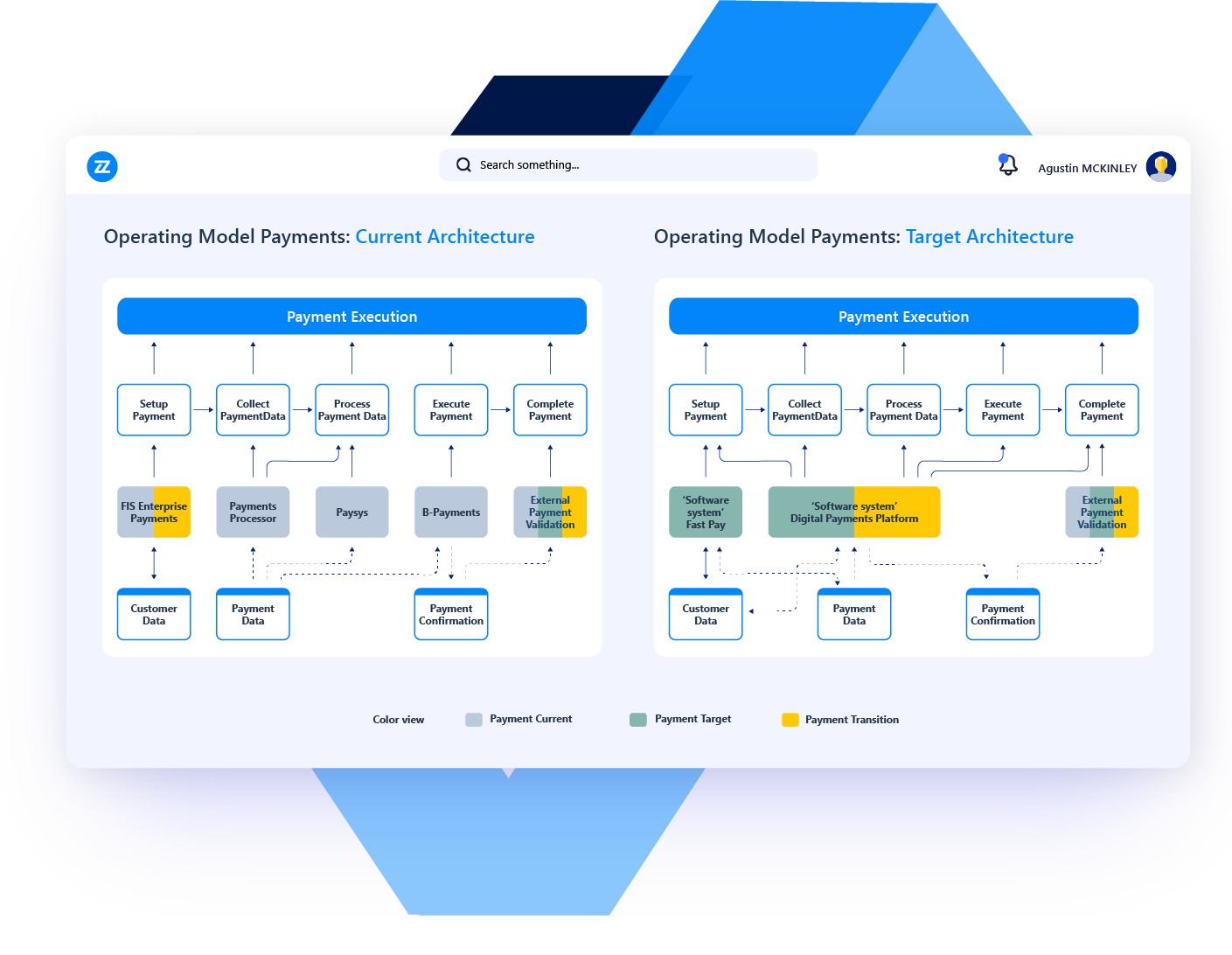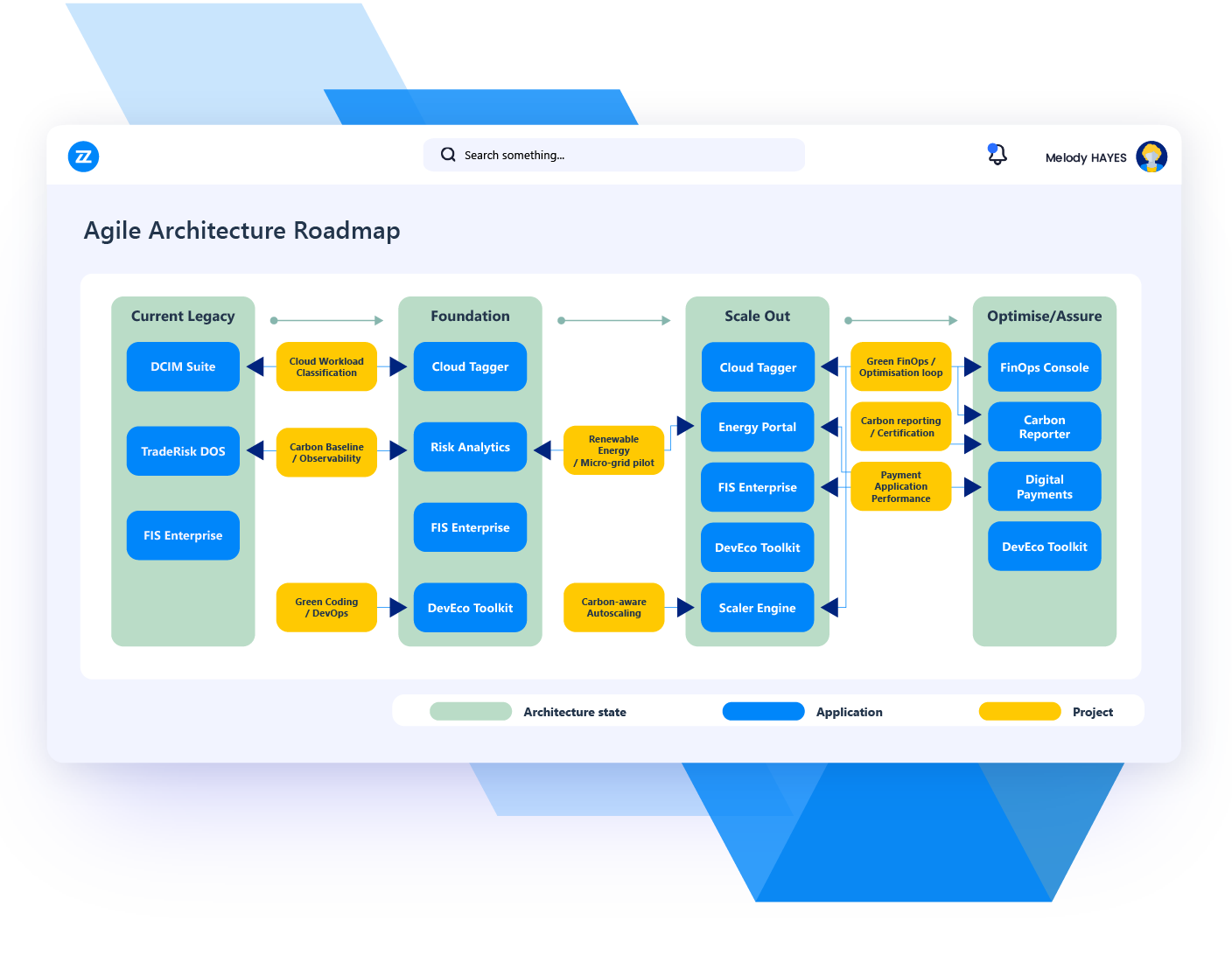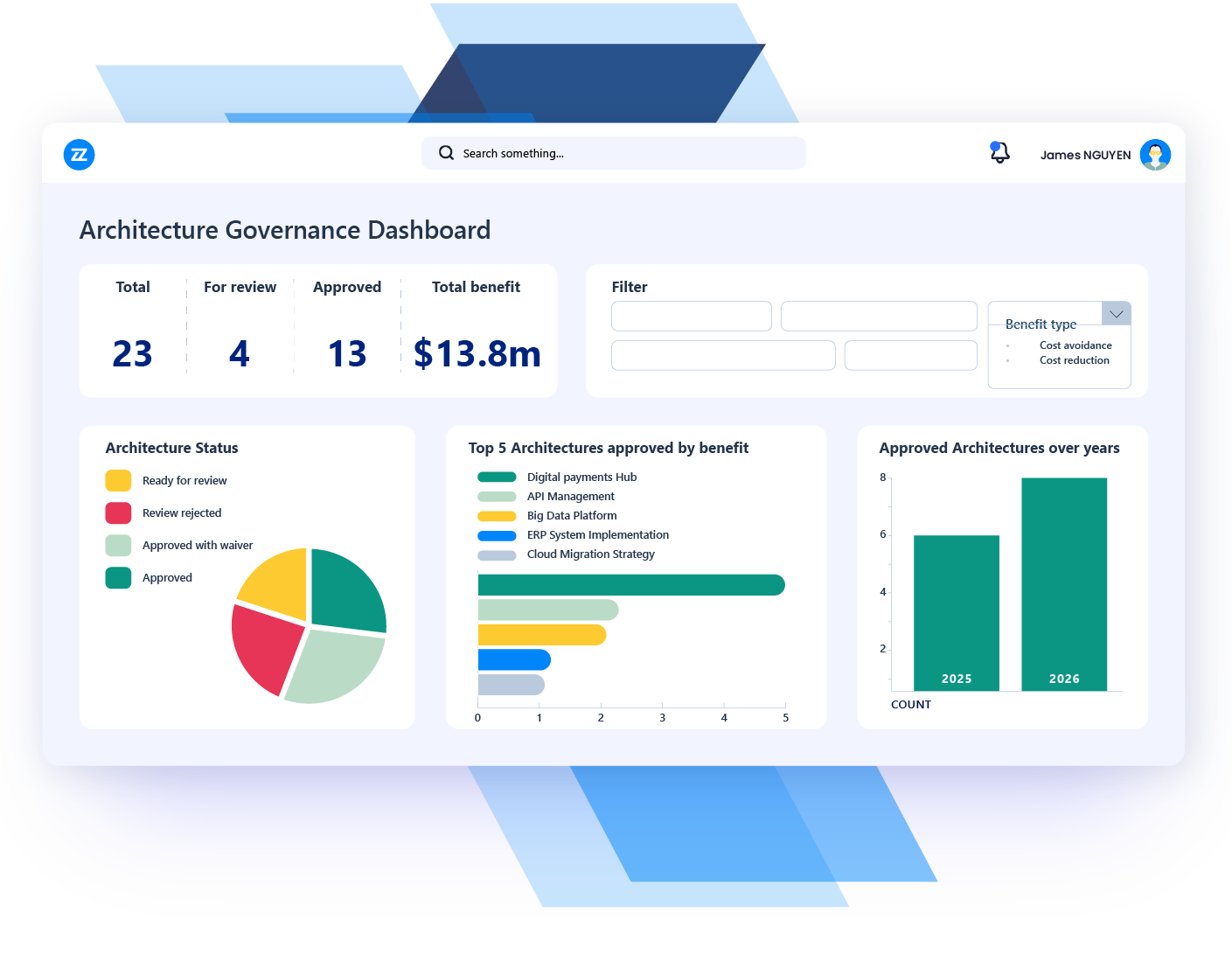Enterprise Architecture Management
Bridge Strategy and Execution With
Enterprise Architecture Management
Align Strategy, Architecture, and Operations
As complexity grows, the gap between strategy and execution widens. Enterprise Architecture Management closes that gap, aligning IT and business for faster transformation. Make smarter decisions with AI-driven insights from a single source of truth to become more efficient, agile, and resilient.
See Clearly. Act Strategically.
- Expose waste and risks to strengthen governance and resilience.
- Prioritize investments and enable shared decision-making.
- Accelerate time-to-value with enterprise-wide alignment.

Build Clarity. Drive Change.
Uncover risks, align priorities, and keep transformation moving at speed and at scale.



